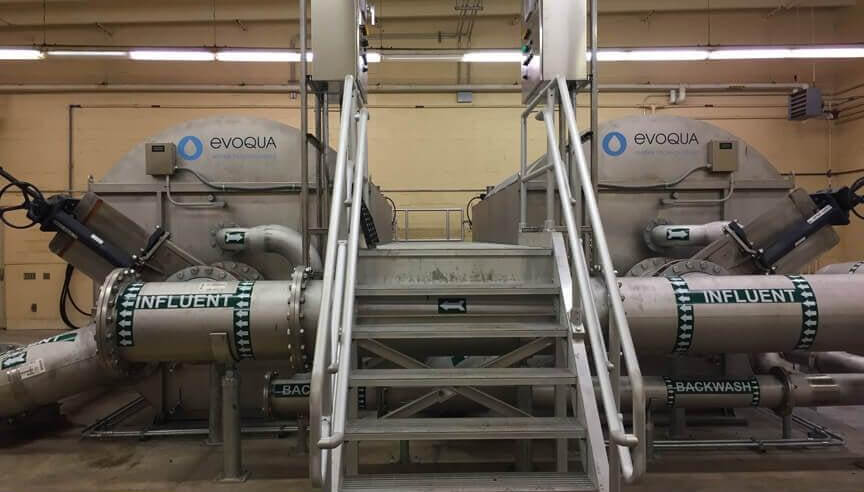Recent Posts
Disc Filters for Tertiary Wastewater Treatment

The Use of Disc Filters for Tertiary Wastewater Treatment
Tertiary wastewater treatment plays a critical role in ensuring that effluent meets stringent water quality standards before discharge or reuse. Among the various technologies employed in this stage, disc filters have gained prominence due to their efficiency in reducing Total Suspended Solids (TSS) and their adaptability to diverse treatment environments. This paper explores the role of disc filters in tertiary treatment, their effectiveness in TSS reduction, and the differences between installing them in concrete channels versus enclosures.
Principles of Disc Filter Operation
Disc filters operate through a combination of mechanical filtration and backwashing mechanisms. The core component is a series of vertically mounted, partially submerged discs covered with a fine filter cloth. As wastewater flows through the filter, suspended solids are trapped on the surface of the filter media, allowing clean water to pass through. The accumulation of solids triggers an automatic backwash cycle, which cleans the filter media without interrupting the filtration process. This continuous operation makes disc filters highly efficient and suitable for high-volume wastewater treatment facilities.
Reduction of Total Suspended Solids (TSS)
The primary objective of disc filters in tertiary treatment is the significant reduction of TSS, enhancing the clarity and quality of the treated effluent. The fine mesh of the filter cloth, often ranging from 10 to 20 microns, effectively captures a wide range of suspended particles. The design ensures a high filtration surface area within a compact footprint, promoting consistent removal efficiency even under variable flow conditions. By maintaining low TSS levels, disc filters help prevent downstream issues such as biofouling and eutrophication in receiving water bodies, supporting both environmental protection and regulatory compliance.
Installation in Concrete Channels
Installing disc filters in concrete channels is a common approach in large-scale wastewater treatment plants. This method integrates the filtration system directly into the plant’s existing hydraulic infrastructure, utilizing gravity flow to drive the process. Concrete channel installations offer structural stability and can handle high flow rates with minimal energy input. However, they require precise civil engineering work during construction and can be less flexible for future modifications or capacity expansions.
Installation in Enclosures
Alternatively, disc filters can be installed within prefabricated enclosures or steel tanks, offering greater flexibility and ease of installation. Enclosed systems are often used in retrofit projects or facilities with space constraints. These modular setups allow for easier relocation, maintenance, and system upgrades. While they might incur higher initial equipment costs compared to concrete channels, the reduced civil work and adaptability often balance the overall investment.
Conclusion
Disc filters provide an effective solution for tertiary wastewater treatment, particularly in reducing TSS to meet environmental standards. Their operational efficiency, combined with flexible installation options—whether in concrete channels or enclosures—makes them a valuable component in modern wastewater management strategies. By selecting the appropriate installation method based on site-specific requirements, treatment facilities can optimize performance, cost-efficiency, and long-term sustainability.
